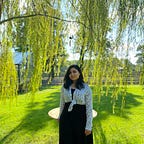Long-term thinking in a world where short term benefits reign
Cathedral thinking, a concept originating from the middle ages, can be defined as ‘the concept of long-term thinking projects or goals that must be realized for the sake of future generations.’ (Macmillan Dictionary, 2019)
While the direct application of this can be observed in cathedrals’ construction, there are more significant underlying ideas. To apply this way of thinking, equal importance must be placed on both the present and the future wants and needs. While implementing an idea in the present, its impact in the future also needs to be considered. Furthermore, it requires creative thoughts, purposeful actions, and a strong commitment to long-term implementation. It is hard to think of many current instances where cathedral thinking is applied in our fast-paced and consumption-driven lives.
Human life tends to be structured around a central institution. For a long time, this role was fulfilled by the church, which commissioned cathedrals. The church was a very structured organization playing a significant role in people’s lives. Not only on a social level but also on a physical level; it brought people together to form communities, and market places often appear to surround big cathedrals. They provided a central structure for people to connect with other people and pass down ideas from one generation to the next in a very mechanical and organized manner. How this structure was created and maintained was beyond something that could be achieved in a single lifetime, this provided sustainability to its existence. Nowadays, our lives are surrounded by different organizational structures. These are usually our employment place or where we study, or here we live, yet all of them are still highly mechanical and well-organized institutions. We plan our lives, target our goals towards them, this provides a structure to our lives.
Architecture as an analogy
The architectural background of New York and its skyline provides an excellent real-life example to solidify the above comparison. By the early 20th century, the church’s importance was declining, and trade and other economic powers took over its role. Fewer churches were being commissioned, and the demand for office spaces was higher than ever. The corporate lifestyle was what everyone wanted, and that is reflected in the number of skyscrapers built in New York during the 1920s. In the same way that façades and interiors of churches teach us something about the people who made and used them, sky scrappers also represented the values that came with the new lifestyle. The buildings’ height can be as positively correlating to the turnover and the ambitions of the organizations building them. People aspired to work for these organizations, and the ultimate dream was to get a corner office on the uppermost floors of the tower.
The New York skyline’s history also tells us the story of the economic cycles that we’ve been through in roughly the past 100 years. In the ’20s, the business was booming, and everyone wanted to be a part of the lifestyle that included never-ending consumption and flashy offices. Then came the Great Depression and WW2, and the skyscraper market was dead. Post-war demand picks up again, only to slump again in the ’70s. This cycle continues with periods of economic growth and recession, most recently and memorably in 2008.
We have seen an exact comparison between cathedrals of before and the urban cities of today. Our end goals today include un-ending growth, instant gratification, and present day consumption. We have succeeded in replacing the physical structures and spaces that our life centers around.
How about thinking beyond our lifetime? We have traded long-term thinking for short-term gains. So what acts performed by organizations can be categorized as cathedral thinking?
Organizations of today have their own unique learnings and insights. Their scale of operations and impact is unprecedented. Despite the size and complexity of present-day organizations, they lack the cathedral ethos to provide lasting structures that truly exist long-term. The infrastructure of these organizations does not allow the sharing and passing down of information to future generations. We archive data hoping that someone might refer to it, but this is done without active purpose; by design, there is no system for passing down knowledge. How do today’s organizations facilitate this? What are the commonalities and divergences regarding the organizations’ impact and efficacy?
If this was written pre-pandemic, I could have stopped here, but the reality of the year 2020 makes these questions more important than ever before.
Organizations were highly dependent on the physical space for their influence and aligned all of their structures around this premise. The architectural stance that created an organizational ethos, the bonding that happened on a physical plane, is now effectively dead or at the very least highly altered. What remains when the physical element is ripped away? Life went on, and organizations did not cease to exist, but many of the problems arising from organizational short-sightedness were exposed. Quarterly numbers and profits no longer suffice as the only goals that an organization can have.
Clearly, we need to think beyond just the next few years; we need to consider why we do what we do. We need to ask how we can survive if we make a loss for a while. What happens to the organization when the goal is no longer year on year growth? What is the actual value and structure that we add to the people who are part of the organizations and those who surround it?
To answer these questions, the element of long-term thinking must be included in rethinking organizations, and cathedral thinking provides a good place to start this process by forcing us to be visionary and purposeful in our actions. Those organizations that successfully incorporate this will be the ones who can withstand disruptions, reinvent themselves, and adapt to changing environments and still stand tall.
